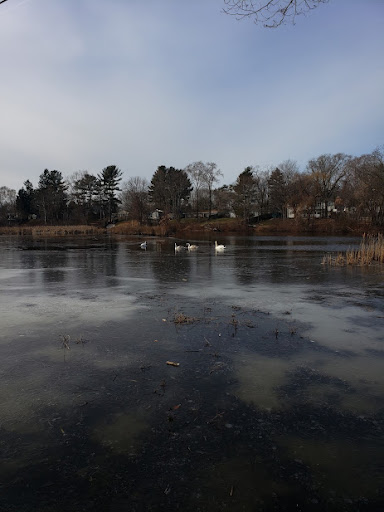Mute Swan Family Winter Update
In fall of 2020, I remember looking out over Wickford Bridge while walking home from a weeding job in downtown Framingham. The only animal in sight was a lone Mute Swan. I had seen Mute Swans in The Sudbury River long before that, but that was the last time i'de seen that swan alone. In February in 2021, while feeding the ducks in the river, I noticed the swan had found a mate. Two beautiful white birds sleeping on the ice.
In may, they had two cygnets (baby swans). The cygnets are still swimming alongside their parents as of January, 2022. It has been almost a year since they hatched. Mallard ducklings look and behave like adults after their first month of life. Same with Canada Geese. Mute Swan cygnets are born in the spring, and stay with their parents until the spring of the next year. When an animal has lots of babies and spends little effort on each one, they have evolved that way due to heavy predation. This must mean that for whatever reason, Swans do not get killed by predators as much as the other waterfowl in the area.
On the 19th, I saw the family again. The cygnets are still grey, but are the same size as the adults. The four of them were paddling along at the side of a sheet of floating ice, anchored to the riverbank by a patch of Phragmites.

.jpeg)

Yeah, they don't belong here but always nice to see. I have been seeing a pair for years and years raising their family on the pond behind Birch Road near the Wayland line., part of the Pod Meadow area. There have been swans on the Sudbury R by the aqueduct. Keep up the good work.
ReplyDelete